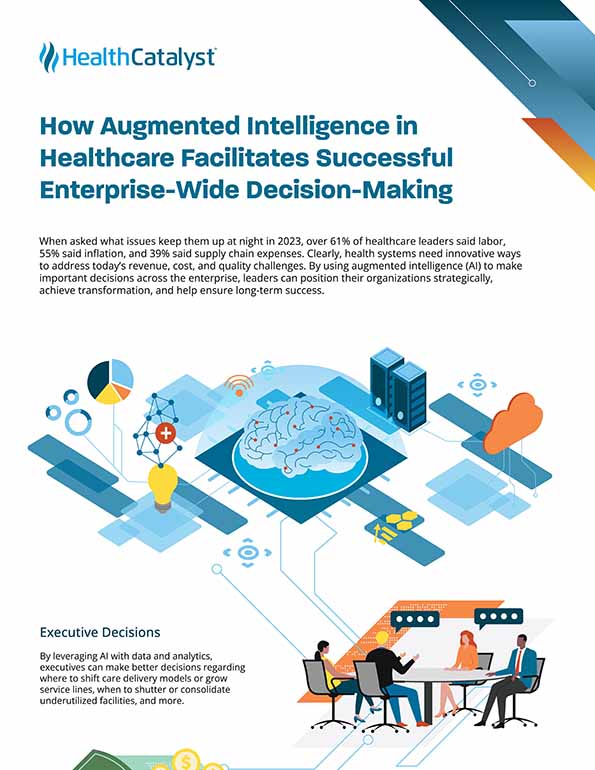Can augmented intelligence guide healthcare executives to make better organizational and clinical care decisions? Explore ways leaders can leverage AI across the healthcare ecosystem.



Today's healthcare executives are under significant pressure from a variety of stakeholders to guarantee organizational effectiveness, efficiency, and profitability. However, according to the consulting firm WittKieffer, nearly 75 percent of healthcare executives in the U.S. are experiencing burnout, and most believe it negatively impacts their organizations.
Fresh solutions that are simple to implement and yield instant and quantifiable outcomes are needed to address the job stress and burnout experienced by many healthcare executives. Augmented intelligence (AI) can relieve their burdens by automating tasks, streamlining operations, and monitoring waste and bottlenecks of healthcare analytics.
Typical business intelligence (BI) tools aim to support decision-making in these areas, but augmented intelligence goes further. It utilizes advanced algorithms to analyze vast datasets to identify patterns and anomalies and generate previously undetected insights. In doing so, health leaders arrive at the correct decisions faster, without spending hours poring over spreadsheets or searching databases.
Uncovering insights through deep data analysis enables executives to make thoughtful decisions regarding relocating care delivery models, expanding service lines, and consolidating operations. More specifically, leaders can use AI algorithms to harness healthcare analytics to conduct the following:
Experts have revealed that healthcare finance leaders are grappling with lower operating margins, labor shortages, high turnover, and rising supply chain expenses, which underpins the mounting stressors executives face. Leveraging AI can unveil opportunities to mitigate costs and more effectively manage existing workforces and operating margins, specifically in the following areas:
By integrating augmented intelligence into the care process, healthcare professionals may garner real-time decision support. Indeed, pre-built algorithms can analyze extensive patient health records, more easily detect trends, and visualize historical data based on statistical models without human input.
Patient acuity is another area where AI can impact the care process. During the pandemic, America's hospitals observed increasing numbers of patients requiring intensive care. On the other hand, individuals also delayed treatments for non-COVID-19 conditions due to capacity concerns, which applied tremendous pressure on health systems. According to an American Hospital Association report, various factors, including delayed treatments, have led to higher labor, drug, and medical supply expenses. Consequently, already stretched thin, healthcare leaders and hospitals faced unprecedented challenges. Health chiefs could address these challenges by leveraging AI to forecast clinical outcomes and assess disease progression before matters worsen.
Regrettably, many BI tools lack the functionality to meet the requirements that enable swift and targeted executive decision-making. Healthcare.AI seamlessly integrates into a health system’s existing data analysis and reporting enterprise, thereby providing enhanced clarity and support for decision-making without replacing native tools. Such applications give healthcare leaders precise, comprehensive healthcare analytics to make strategic decisions for each department as it relates to:
As health systems press on toward greater analytic complexity, new augmented intelligence-based applications can help foster a more effective and efficient healthcare ecosystem allowing executives to make better decisions that enhance revenues, patient engagement, operations, and continuous quality improvement.
Would you like to learn more about this topic? Here are some articles we suggest: